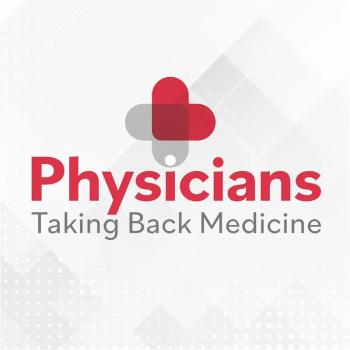
How will health IT trends evolve in 2017?
Waves of predictions about the health IT industry roll in at the end of every year. But how accurate were they in 2016?
Waves of predictions about
A number of trends, topics and technologies were expected to affect health IT over the past year. While each had an impact, the size and shape of these impacts may have been somewhat different than expected.
Further reading:
To better understand and anticipate the future of health IT in 2017, we’ll take a look at how the following predictions about the top health IT trends of 2016 played out.
1. Information security will be a major focus
Provider organizations were expected to invest heavily in information security in 2016. High-profile data breaches throughout 2015 turned this into a major priority.
Healthcare has become an attractive target for cybercriminals for a plethora of reasons. Many people within and across healthcare organizations, from clinicians to administrators, have access to protected health information (PHI), and tools to leverage PHI have been rapidly adopted in recent years without all of the appropriate safeguards in place. Moreover, healthcare data continues to grow in volume and value as records are highly confidential and often very complete, enabling healthcare fraud. Lastly, there has been a heavy reliance on compliance measures. However, because these guidelines haven’t been updated to keep pace with today’s complex security landscape, complying with them isn’t enough, as compliance doesn’t mean that organizations are safe from sophisticated attacks.
As expected, spending on security increased dramatically in 2016 as
First, in spite of a growing sense of urgency, security budgets are still smaller than the scope of the problem. Second, the prevalence of ransomware wasn’t necessarily anticipated. Many hospitals were threatened with their networks being taken down unless they paid a ransom. This heightened security concerns. In turn, care continuity and the potential risk of
Hot topic:
The priority placed on cybersecurity will only grow in 2017 - health IT data and networks remain appealing targets. The advent of the Internet of Things has brought “smart” medical devices that connect directly to providers’ networks into the mix. Consequently, if the network at a primary care physician’s office houses and shares critical care data regarding the PHI of a stroke patient with the ICU’s network, for example, a security breach in either network could compromise the patient’s treatment. With increasingly complex health IT infrastructures that are more reliant on the cloud and expanding due to mobility requirements, new vulnerabilities emerge every day. That reality means that the market for security products and services in hospitals is estimated to grow by
2. Data centers will embrace optimized connectivity solutions
As healthcare becomes increasingly reliant upon IT, it’s necessary to adopt a more centralized and standardized approach; major new investments in the operational, administrative, and care sides of the organization were expected throughout 2016. The goals were to leverage the collective power of IT while eliminating the consequences of data silos and inconsistent application performance. By ensuring the right platforms were in place for future rollouts, organizations could empower initiatives combining data with real-time analytics and physician support tools.
Related:
If anything, this prediction was underestimated. Huge sums were committed to centralizing, standardizing and scaling IT infrastructures. When
In 2016, many organizations mistakenly assumed that integration was the only issue, thinking that if they brought everything under one umbrella, all of the benefits would immediately manifest. However, without new data management tools in place, advanced analytics capabilities were virtually impossible, prompting some to invest in shadow IT deployments to jump-start their analytics engines.
An expanded focus on care outcomes-specifically, how tools, artificial intelligence and analytics can support better decisions and proactively alert clinicians to at-risk patients once database management initiatives have been executed-makes an integrated approach to health IT even more important in 2017.
3. Cloud adoption will take off
The evolving imperatives of health IT dovetailed nicely with the properties of cloud computing in 2016. To achieve cost efficiencies, develop more robust business continuity and disaster recovery solutions, and keep pace with next-generation platforms that would enable greater scalability and agility, healthcare organizations were expected to migrate to the cloud en masse.
The cloud proved to be as popular as predicted, with cloud adoption accelerating throughout 2016. After getting comfortable with the cloud, many adoptees searched for ways to improve analytics and patient empowerment tools and test development environments. If anything, enthusiasm for the cloud was even greater than expected.
Blog:
However, even the experts failed to forecast how popular a hybrid IT configuration would prove to be in 2016. While many providers depend on the cloud for only part of their infrastructure, others learned how to leverage the value of multiple cloud providers based on their projects’ tailored requirements.
The depth and breadth of cloud adoption in health IT will continue to accelerate in 2017. According to research firm MarketsandMarkets, healthcare providers spent an estimated $3.73 billion on cloud services last year, and that figure is expected to grow to $9.5 billion annually by 2020. As administrators continue to strive for agility, stability, security and affordability, the cloud will be the platform of choice. Moreover, hybrid IT models will emerge as critical enablers, allowing providers to execute on key patient engagement and analytics initiatives while ensuring continuity of mission-critical applications.
The health IT trends of last year will continue to play a prominent role in 2017. But on top of existing priorities, cost containment will be a key focus as compensation policies evolve and as more pressure is placed on shifting from Capex (making costly, long-term investments) to Opex (relying on service providers in more of a pay-as-you-go model).
What’s positive is that continuing to embrace the trends of 2016 will lead to greater cost efficiencies. But to support existing IT infrastructure while simultaneously fostering innovation and responding to an ever-evolving healthcare landscape, these trends will need to be adapted for 2017 and beyond. In the upcoming year, one thing is certain: Change, once again, remains a constant in health IT.
Newsletter
Stay informed and empowered with Medical Economics enewsletter, delivering expert insights, financial strategies, practice management tips and technology trends — tailored for today’s physicians.















